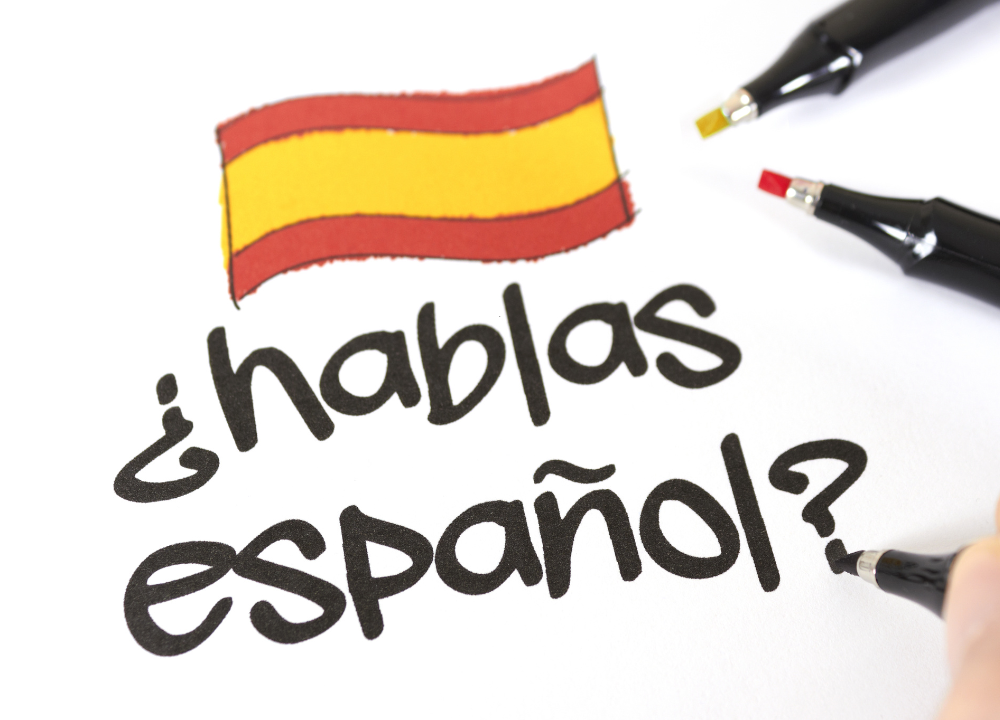Understanding idioms is key to mastering any language. They add depth and color to conversations. “Estoy En Raya” translates literally to “I am in line,” but its true meaning goes beyond this. This expression often reflects being in good spirits or feeling on track in life.
Introduction To The Phrase “Estoy En Raya”
The phrase “Estoy en Raya” is a colorful idiom in Spanish. It captures a unique feeling or situation. Understanding this phrase can help in grasping cultural nuances in Spanish-speaking countries. This guide will explore its meaning and origins.
What Does “Estoy En Raya” Mean?
“Estoy en Raya” translates to “I’m on Raya” in English. It has multiple interpretations depending on context. Here are some common meanings:
- In a good mood: It can mean someone feels happy or in a positive state.
- Being alert: It may indicate that a person is paying close attention.
- Meeting expectations: It shows that someone is fulfilling responsibilities or obligations.
In various scenarios, the phrase can express:
- A sense of readiness.
- A feeling of balance in life.
- A moment of clarity.
Here’s a quick table summarizing different contexts:
| Context | Meaning |
|---|---|
| Emotional State | Feeling happy or content |
| Attention | Being alert and focused |
| Responsibility | Meeting personal or work obligations |
This phrase reflects a state of being that resonates with many. Its versatility makes it popular in everyday conversations.
The Origins Of The Expression
The expression “Estoy en Raya” has rich cultural roots. It likely comes from the Spanish word “raya,” meaning line or stripe. Lines often symbolize boundaries or limits. In daily life, lines can represent structure and order.
The phrase may have originated in various contexts:
- Sports: Athletes may refer to being “in the line” of play.
- Games: Players often need to stay within certain lines for fair play.
- Cultural Traditions: Festivals may use lines to indicate paths or boundaries.
Over time, “Estoy en Raya” evolved to reflect emotional and psychological states. It embodies a sense of achievement and balance. Many use it to express satisfaction in life.
This idiom connects people to their experiences. It shows how language evolves with culture. Understanding its origins adds depth to the phrase.
Contexts In Which “estoy En Raya” Is Used
Recognizing when and how to use this phrase enriches your conversations. It helps you connect better with native speakers.
“Estoy En Raya” In Everyday Conversations
The phrase “Estoy en Raya” is frequently used in casual chats among friends or family. It often conveys a sense of being in a good mood or feeling fine. Here are some common situations where this phrase might come up:
- During a friendly gathering.
- While discussing personal achievements.
- After completing a challenging task.
Here’s a simple table that shows how the phrase can fit into different scenarios:
| Scenario | Example |
|---|---|
| Meeting friends | “Hoy estoy en raya, ¡todo va bien!” |
| Celebrating success | “Terminé el proyecto a tiempo, ¡estoy en raya!” |
| Feeling energetic | “Después del café, estoy en raya.” |
People often use this phrase to share their positive feelings. It helps create a cheerful atmosphere. Using “Estoy en Raya” makes your conversations lively and engaging.
The Phrase In Popular Culture
“Estoy en Raya” appears in various forms of popular culture, such as music, television, and movies. Artists and creators often use it to express joy or excitement. Here are some examples:
- Songs: Some Spanish songs feature this phrase in lyrics, emphasizing happiness.
- TV Shows: Characters might say “Estoy en Raya” to show they are having a good time.
- Movies: A scene may include this phrase during a celebration or fun moment.
Its use in popular culture helps spread the phrase among younger generations. This makes it relatable and trendy. Here are some notable examples of its use:
- In a famous song, the singer mentions feeling “en raya” after a breakup.
- A popular sitcom character uses it after getting good news.
- In a movie, friends celebrate a victory by shouting “¡Estoy en raya!”
These instances highlight how “Estoy en Raya” resonates with people. It captures a feeling that many can relate to, making it a beloved expression.
Different Interpretations Of “estoy En Raya”
Each interpretation offers a unique perspective on life and achievements. Let’s explore how this phrase can be understood in different contexts.
On A Streak Of Success
“Estoy en Raya” often signifies a period of success. People use it to describe moments when everything seems to go right. This phrase captures the feeling of being in a groove. It reflects achievements in various areas of life, such as:
- Career advancements
- Personal goals
- Academic success
Here are some examples of how people experience success:
| Situation | Outcome |
|---|---|
| Promotion at work | Increased responsibility and salary |
| Winning a competition | Boost in confidence |
| Completing a challenging project | Recognition from peers |
Being “en raya” is about feeling unstoppable. It encourages individuals to pursue their goals with energy. Each success builds momentum, making it easier to tackle new challenges. This phrase embodies the spirit of determination and achievement.
In A Winning Or Lucky Period
The phrase also reflects a time of good fortune. When someone says “Estoy en Raya,” they might refer to a lucky streak. This could be related to games, investments, or daily life. Feeling lucky can manifest in different ways:
- Winning a lottery ticket
- Getting unexpected good news
- Finding money on the street
People often share stories about their lucky periods. Here are a few:
- A person wins a small gambling game.
- Someone receives a bonus at work unexpectedly.
- A student aces an exam without studying much.
Being “en raya” in this sense brings joy and excitement. It creates a feeling of hope and positivity. Many cherish these moments, as they uplift spirits and encourage good vibes. Luck plays a significant role in life, and recognizing it can enhance our experiences.
Literal Vs. Figurative Meaning
The phrase “Estoy en Raya” has both literal and figurative meanings. Literally, it translates to “I am in line” or “I am on a stripe.” This can refer to being physically present in a particular spot. However, the figurative meaning is much richer.
Figuratively, it symbolizes being in a state of achievement or luck. The contrast between the two meanings shows the depth of the idiom:
- Literal: Standing in a line, like waiting for a bus.
- Figurative: Experiencing success or good fortune.
Understanding this contrast helps grasp the idiom’s essence. It reflects how language can evolve. Words take on new meanings based on context. “Estoy en Raya” is a perfect example of this phenomenon.
Examples Of “estoy En Raya” In Sentences
In this section, we will explore examples of how to use “Estoy en Raya” in sentences. You will see its application in both informal and formal contexts.
Informal Usage In Social Situations
In casual conversations, “Estoy en Raya” can express that someone is feeling good or confident. People often use it to indicate they are ready for a social event or gathering. Here are some examples:
- Example 1: “Hoy tengo todo listo para la fiesta. Estoy en raya!”
- Example 2: “Después de organizar mis cosas, ahora estoy en raya para salir.”
These sentences show how friends might use the phrase to convey readiness. It indicates enthusiasm and a positive mindset. The phrase can also describe a good mood. For instance:
- Example 3: “Después de un buen desayuno, estoy en raya para el día.”
- Example 4: “Me siento muy bien hoy. Estoy en raya!”
In informal settings, the phrase creates a lively atmosphere. It connects people through shared feelings of excitement and readiness. Here’s a simple table summarizing informal examples:
| Context | Sentence |
|---|---|
| Party Preparation | Hoy tengo todo listo para la fiesta. Estoy en raya! |
| Daily Motivation | Me siento muy bien hoy. Estoy en raya! |
Formal Or Professional Settings
In formal or professional contexts, “Estoy en Raya” takes on a more serious tone. It can denote being organized, prepared, or on schedule. Here are a few examples:
- Example 1: “He revisado todos los documentos. Estoy en raya para la reunión.”
- Example 2: “Después de planificar el proyecto, ahora estoy en raya para presentarlo.”
In these cases, the phrase emphasizes professionalism and readiness. It is important to convey competence in work environments. Here are more examples:
- Example 3: “El equipo ha cumplido con los plazos. Estamos en raya para el lanzamiento.”
- Example 4: “Antes de la auditoría, necesitamos asegurarnos de que estamos en raya.”
Using “Estoy en Raya” formally shows that you are responsible and prepared. Here’s a table highlighting these formal examples:
| Context | Sentence |
|---|---|
| Meeting Preparation | He revisado todos los documentos. Estoy en raya para la reunión. |
| Project Planning | Después de planificar el proyecto, ahora estoy en raya para presentarlo. |
This phrase is versatile. It fits both casual and professional situations. Knowing how to use it effectively enhances communication in Spanish.

